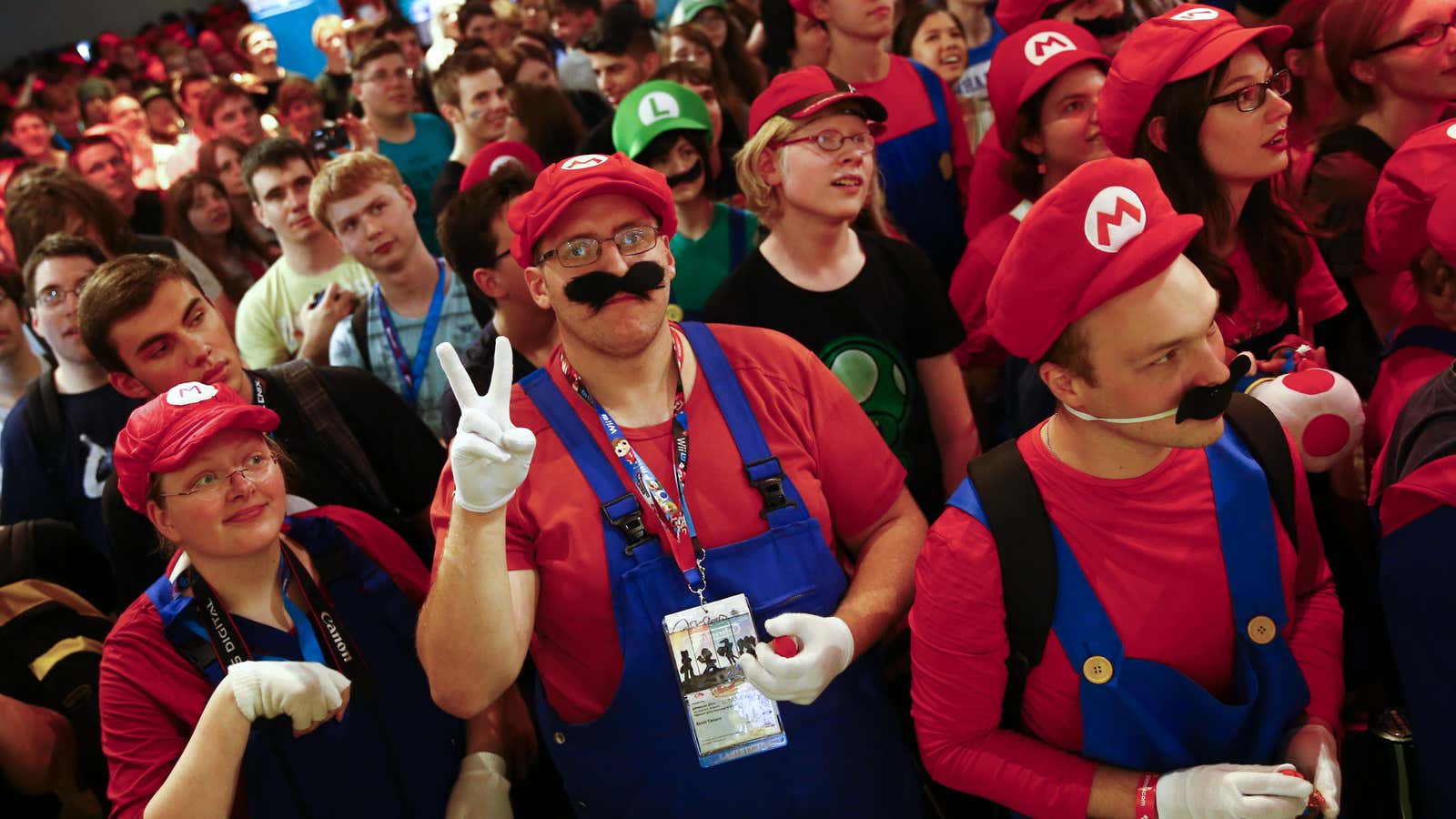Nintendo’s breathlessly anticipated mobile game Super Mario Run dropped yesterday. Fans promptly complained that it’s too expensive, and Nintendo’s share price sank by more than 4% in trading today. For the week, Nintendo’s stock has fallen by nearly 10%.
What gives? Super Mario Run, which has shot to the top of download charts, is expected to be a hit. According to app analytics firm Sensor Tower, it should gross $71 million in its first month on Apple’s App Store, which would put it in the top three highest-grossing games in their first month on the platform, ever.
One worry about Super Mario Run is the unconventional way it gets players to shell out money for the game. Instead of charging for ad hoc power-ups to speed up a player’s progress, as most “free-to-play” mobile games do, Nintendo asks players to pay $9.99 to unlock later levels in order to complete the game.
This hasn’t gone down well with some fans.
Super Mario Run‘s conversion mechanism makes it expensive even relative to paid games, like Minecraft: Pocket Edition, which costs $6.99. But it also puts a cap on spending, unlike traditional free-to-play games like Pokémon Go, where players can spend as much as they like on extras. This can generate higher revenue over time; one estimate found Pokémon Go players spend $20 on average playing the game.
There’s another key difference between Pokémon Go and Super Mario Run. While the creature-catching augmented reality game was a surprise hit, sending Nintendo’s shares soaring, the Mario franchise rollout has been carefully orchestrated. Indeed, Nintendo’s stock has risen steadily since the Mario title was announced on Nov. 15, and remains higher even after this week’s slide.
A Pokémon-sized rally was unlikely, as players’ reluctance to pay up in huge numbers proves. In the end, though, the drop in Nintendo’s shares is most likely traders buying the rumor and selling the news, taking advantage of the smooth but unspectacular release of Super Mario Run to take profits on a stock that’s up around 60% on the year.
